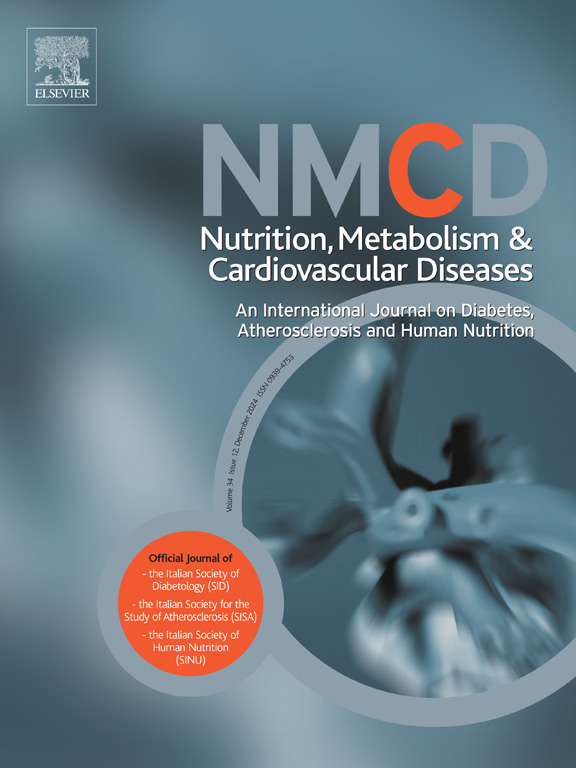Global cardiovascular disease burden attributable to high low-density lipoprotein cholesterol, 1990–2021: An age-period-cohort analysis of the global burden of disease study 2021
IF 3.3
3区 医学
Q2 CARDIAC & CARDIOVASCULAR SYSTEMS
Nutrition Metabolism and Cardiovascular Diseases
Pub Date : 2025-03-27
DOI:10.1016/j.numecd.2025.104030
引用次数: 0
Abstract
Background and aims
To deepen the understanding of global trends in the cardiovascular disease (CVD) burden attributed to high low-density lipoprotein cholesterol (LDL-C).
Methods and results
Utilizing data from the Global Burden of Disease study spanning from 1990 to 2021, an age-period-cohort analysis was conducted to evaluate global trends in mortality and disability-adjusted life years (DALYs) of CVD attributed to high LDL-C. Joinpoint regression analysis was employed to identify periods of the most significant changes. The findings indicate a significant increase in the global number of deaths from CVD linked to high LDL-C from 1990 to 2021. However, both the age-standardized mortality rate and DALYs rate exhibited a downward trend, with women experiencing a more pronounced decline than men. The age-standardized rate was lower in countries with higher Socio-demographic Index (SDI) compared to those with lower SDI. Notably, there were significant reductions in CVD mortality during the periods of 1994–1998 and 2003–2007.
Conclusion
This study underscores the critical role of high LDL-C as a risk factor in the global burden of CVD. Investigating gender differences, regional disparities, and variations among different age groups of CVD is essential for developing intervention strategies and health policies.

1990-2021年由高低密度脂蛋白胆固醇引起的全球心血管疾病负担:2021年全球疾病负担研究的年龄期队列分析
背景和目的:加深对高低密度脂蛋白胆固醇(LDL-C)引起的心血管疾病(CVD)负担的全球趋势的理解。方法和结果:利用1990年至2021年全球疾病负担研究的数据,进行了年龄期队列分析,以评估由高LDL-C引起的CVD死亡率和残疾调整生命年(DALYs)的全球趋势。采用联合点回归分析来确定最显著变化的时期。研究结果表明,从1990年到2021年,全球与高LDL-C相关的心血管疾病死亡人数显著增加。然而,年龄标准化死亡率和伤残调整生命年都呈现下降趋势,妇女的下降幅度比男子更明显。在社会人口指数(SDI)较高的国家,年龄标准化率低于SDI较低的国家。值得注意的是,在1994-1998年和2003-2007年期间,心血管疾病死亡率显著下降。结论:本研究强调了高LDL-C作为全球心血管疾病负担的危险因素的关键作用。调查心血管疾病的性别差异、地区差异和不同年龄组之间的差异对于制定干预策略和卫生政策至关重要。
本文章由计算机程序翻译,如有差异,请以英文原文为准。
求助全文
约1分钟内获得全文
求助全文
来源期刊
CiteScore
6.80
自引率
2.60%
发文量
332
审稿时长
57 days
期刊介绍:
Nutrition, Metabolism & Cardiovascular Diseases is a forum designed to focus on the powerful interplay between nutritional and metabolic alterations, and cardiovascular disorders. It aims to be a highly qualified tool to help refine strategies against the nutrition-related epidemics of metabolic and cardiovascular diseases. By presenting original clinical and experimental findings, it introduces readers and authors into a rapidly developing area of clinical and preventive medicine, including also vascular biology. Of particular concern are the origins, the mechanisms and the means to prevent and control diabetes, atherosclerosis, hypertension, and other nutrition-related diseases.

 求助内容:
求助内容: 应助结果提醒方式:
应助结果提醒方式:


